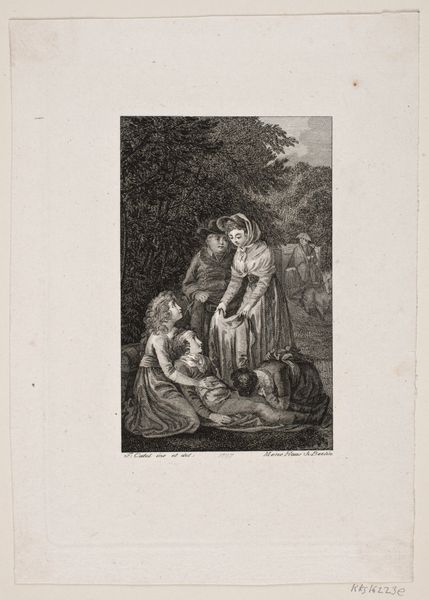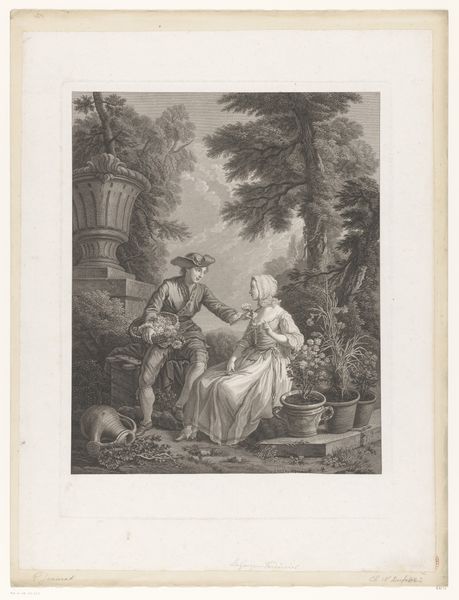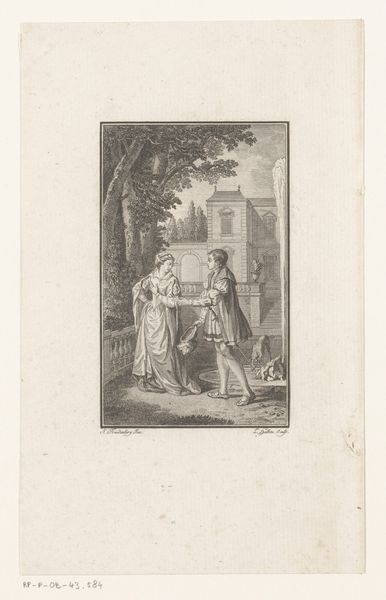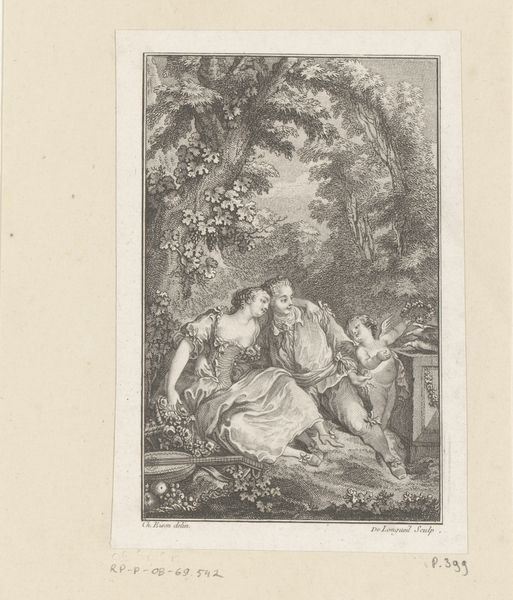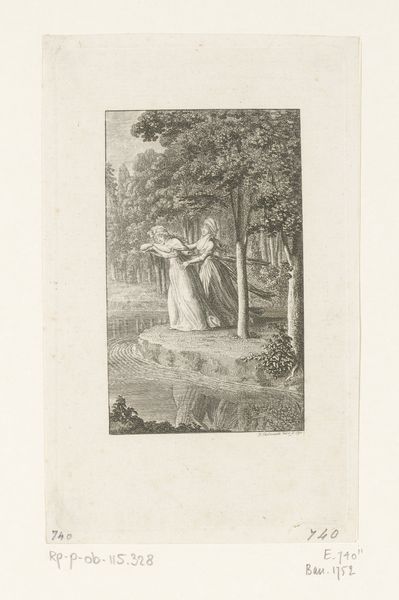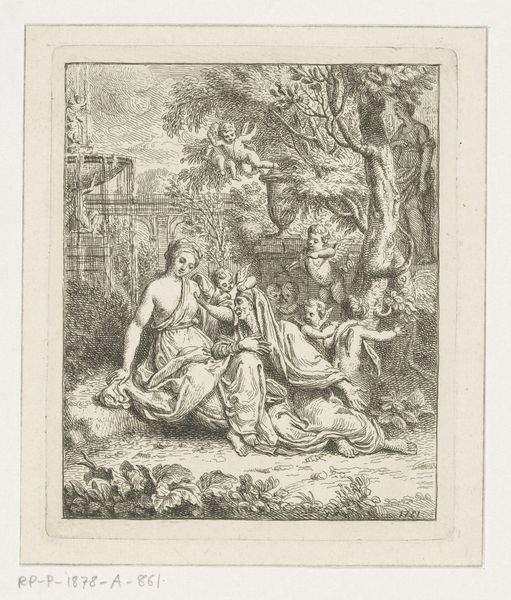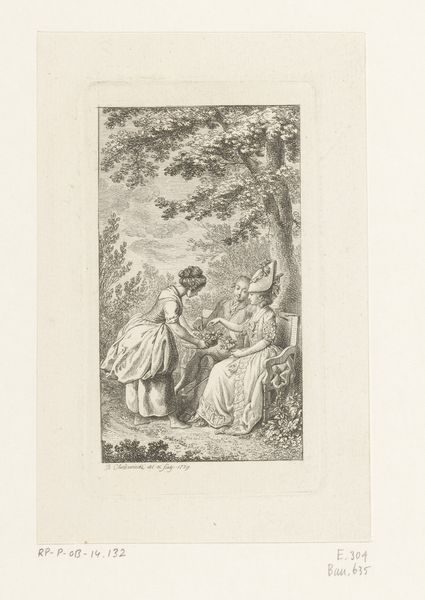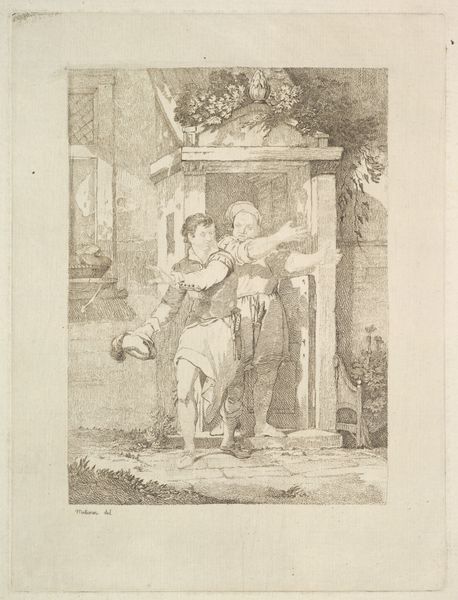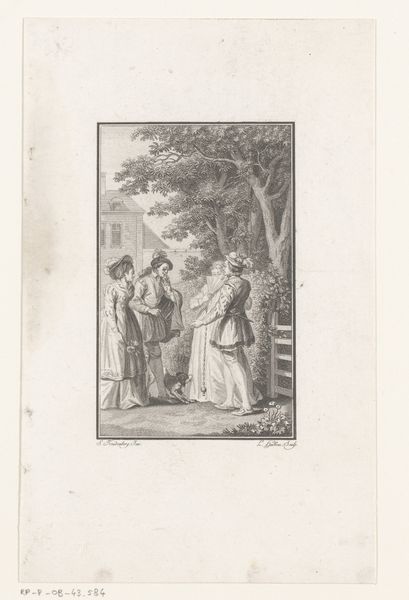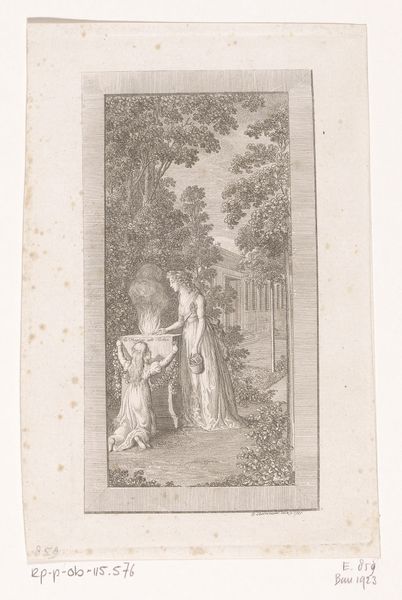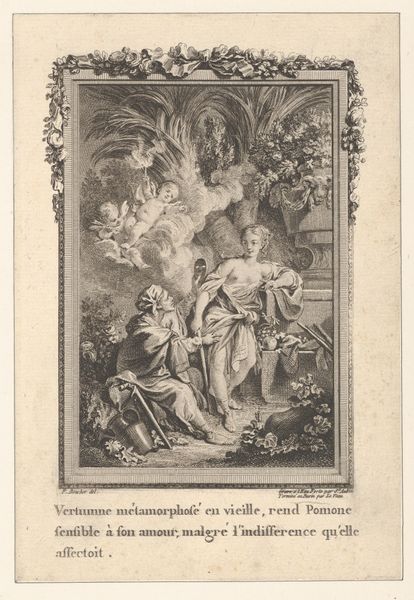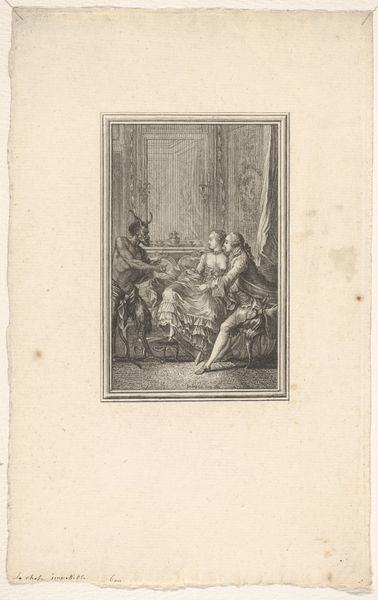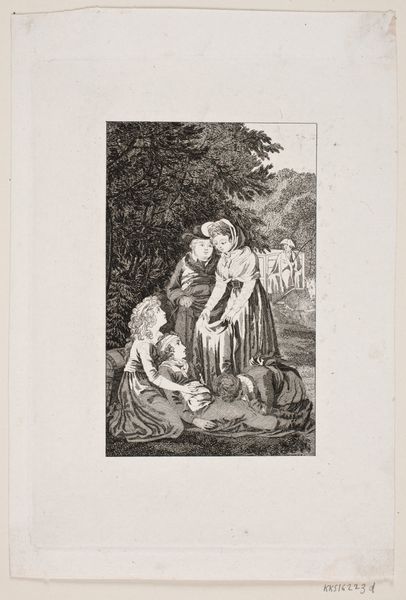
print, etching
#
portrait
# print
#
etching
#
landscape
#
intimism
#
classicism
#
romanticism
#
genre-painting
#
history-painting
Dimensions: height 151 mm, width 93 mm
Copyright: Rijks Museum: Open Domain
Editor: This is Daniel Nikolaus Chodowiecki's etching, "Happy Grandfather with his Family," from 1795, currently housed at the Rijksmuseum. It looks like a snapshot of domestic bliss, a really intimate and tender scene. How do you interpret this work? Curator: The scene's apparent harmony masks deeper social complexities. Genre paintings such as this often served as vehicles for promoting specific ideologies about family roles and societal expectations. Consider the grandfather—he's centered, holding a child, suggesting patriarchal authority, but with a softening, familial aspect. Editor: That's interesting! I was drawn to the sweetness of the scene and hadn’t considered that angle. Curator: Consider also the women’s roles, positioned as caregivers and bearers of gifts. How do these roles reflect the power structures of the late 18th century? Is this idealized representation truly reflective of lived experiences, or is it prescriptive? Editor: So, the image isn't just showing a happy family moment, it's also reinforcing social norms? Curator: Precisely. It participates in a dialogue, reinforcing certain gender roles and expectations, while potentially excluding or marginalizing other forms of family or individual experience. These intimate scenes are actually stages for enacting and disseminating social scripts. We have to examine art and how it relates to race, gender, and class. It is imperative to create inclusive representations. Editor: That’s given me a lot to think about. I won't look at similar works the same way again. Curator: Exactly, we should engage with it by looking deeper. Considering art and social activism together promotes much needed and valuable discussion.
Comments
No comments
Be the first to comment and join the conversation on the ultimate creative platform.
